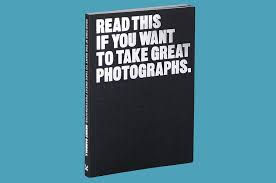Understanding RAW vs. JPEG: A Beginner's Dilemma
- writenehajaswani
- Apr 11, 2024
- 3 min read
Introduction:
For beginners stepping into the world of photography, the choice between shooting in RAW or JPEG format can be a perplexing dilemma. Both formats have their advantages and drawbacks, and understanding the differences is crucial for making informed decisions about your workflow. In this blog post, we'll delve into the fundamentals of RAW and JPEG formats, explore their pros and cons, and provide guidance on when to use each format.
What is RAW?
RAW is a file format that captures all the data from the camera's sensor without any processing or compression. It contains the unprocessed image data, including color information, exposure settings, and other metadata. RAW files are larger in size and require specialized software for editing and processing.
Advantages of RAW:
1. Enhanced Image Quality: RAW files retain maximum image quality and provide greater flexibility for post-processing adjustments, such as exposure, white balance, and color correction.
2. Non-Destructive Editing: RAW editing allows for non-destructive adjustments, meaning you can fine-tune your images without degrading image quality or losing data.
3. Dynamic Range: RAW files preserve a wider dynamic range, capturing more details in highlights and shadows compared to JPEG.
4. Creative Control: Shooting in RAW gives photographers greater creative control over the final output, allowing for experimentation with different editing techniques and styles.
Disadvantages of RAW:
1. Larger File Size: RAW files are significantly larger in size compared to JPEG, occupying more storage space on memory cards and hard drives.
2. Requires Post-Processing: RAW files require post-processing to optimize image quality and convert them into a usable format, which can be time-consuming for beginners.
3. Compatibility Issues: Not all image viewing and editing software support RAW files, requiring photographers to use specific RAW processing software such as Adobe Lightroom or Capture One.
What is JPEG?
JPEG, short for Joint Photographic Experts Group, is a compressed file format commonly used for digital images. It applies lossy compression to reduce file size while maintaining visual quality. JPEG files are widely compatible and can be viewed and edited using various software applications.
Advantages of JPEG:
1. Smaller File Size: JPEG files are significantly smaller in size compared to RAW, making them easier to store, share, and transfer.
2. Ready-to-Use: JPEG files are processed in-camera and ready for immediate viewing and sharing without the need for post-processing.
3. Wide Compatibility: JPEG is a universal format supported by most image viewing and editing software, as well as web browsers and social media platforms.
Disadvantages of JPEG:
1. Lossy Compression: JPEG compression results in loss of image data and quality, particularly in areas of high contrast or fine detail.
2. Limited Editing Flexibility: Editing JPEG files can lead to degradation of image quality due to lossy compression artifacts.
3. Reduced Dynamic Range: JPEG files have a narrower dynamic range compared to RAW, limiting the ability to recover details in highlights and shadows during post-processing.
Conclusion:
In conclusion, the choice between shooting in RAW or JPEG ultimately depends on your specific needs, preferences, and workflow. RAW offers unparalleled image quality and editing flexibility but requires more time and storage space. On the other hand, JPEG provides convenience and compatibility but sacrifices some image quality and editing control. As a beginner, it's essential to experiment with both formats and determine which best suits your photography style and objectives. Whether you prioritize image quality or convenience, understanding the differences between RAW and JPEG will empower you to make informed decisions and elevate your photography skills.



Comentários